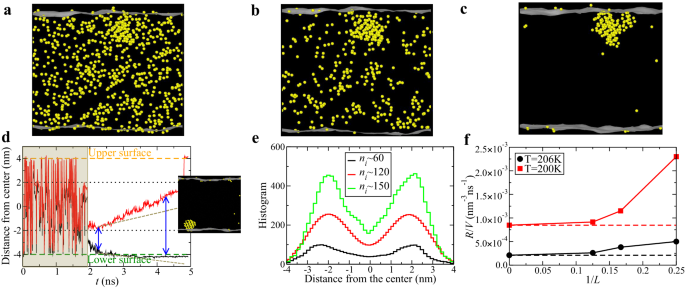Phys.org July 26, 2024
The role of the free surface of water in nucleation process remains unclear. Researchers in Japan investigated the microscopic freezing process using molecular dynamics simulations and found that the free surface assisted ice nucleation through an unexpected mechanism. The surface-induced negative pressure enhanced the formation of local structures with a ring topology characteristic of Ice 0-like symmetry, and promoted ice nucleation despite the symmetry differing from ordinary ice crystals. Unlike substrate-induced nucleation via water-solid interactions that occurs directly on the surface, this negative-pressure-induced mechanism promoted ice nucleation slightly inward the surface. Their findings provided a molecular-level understanding of the mechanism and pathway behind free-surface-induced ice formation. The implications of their discoveries are of substantial importance in areas such as cloud formation, food technology, and other fields where ice nucleation plays a pivotal role… read more. Open Access TECHNICAL ARTICLE

Ice nucleation in a thin water film. Credit: Nature Communications volume 15, Article number: 6083 (2024)